Pringle Bay Accommodation
- Betty's Bay (7.16km)
- Steenbras Dam (18.07km)
- Mountainside (18.59km)
- Kleinmond (18.92km)
- Gordon's Bay (19.98km)
- Sir Lowry's Pass (23.95km)
- Lochnerhof (24.22km)
- Strand (24.36km)
- Elgin Valley Area (26.45km)
- Grabouw (26.67km)
- Somerset West (26.95km)
- Westridge (27.19km)
- Somerset Ridge (27.35km)
- Mereenbosch (27.60km)
- Heldervue (28.57km)
- Pringle Bay Beach - Pringle Bay, Overberg, Whale Coast (0.43km)
- Brodie Link Nature Reserve - Pringle Bay (1.85km)
- Sea Farm Private Nature Reserve - nr Betty's Bay, Whale Coast (3.15km)
- Kogelberg Sonchem Link Nature Reserve - nr Pringle Bay, Whale Coast (3.28km)
- Stony Point Nature Reserve (Penguin Colony) - Betty's Bay, Whale Coast (6.36km)
- Betty's Bay - Main Beach (6.94km)
- The Disa River Waterfall - Betty's Bay, Whale Coast (8.68km)
- Harold Porter National Botanical Gardens - Betty's Bay, Overberg (8.77km)
- Jock's Bay - nr Betty's Bay, Whale Coast (9.44km)
- Gravity Adventure Festival - Kleinmond, Whale Coast (10.10km)
- Kogelberg Biosphere Reserve - Kleinmond, Whale Coast (11.91km)
- Palmiet Lagoon & Beach - Kleinmond, Whale Coast (15.01km)
- Fynbos Festival & Green Living Expo - Kleinmond, Western Cape (16.71km)
- Kleinmond Harbour - Kleinmond, Whale Coast (16.72km)
- Kleinmond Golf Club - Kleinmond, Whale Coast (18.71km)
- Kleinmond Beach - Kleinmond, Whale Coast (18.91km)
- Bikini Beach - Gordon's Bay, Cape Town (20.38km)
- Gordon's Bay Old Harbour - Cape Town (20.50km)
- Gordon's Bay - Main Beach, Cape Town (21.34km)
- Gordon's Bay Harbour - Cape Town (21.95km)
- Rooisand Nature Reserve - Whale Coast, Western Cape (23.88km)
- Botrivier Lagoon - nr Fisherhaven, Overberg (25.06km)
- Monkey Town - Somerset West, Cape Town (25.72km)
- Strand Beach - Strand, Cape Town (26.93km)
- Strand Golf Club - Strand, Cape Town (27.72km)
- Arabella Golf Course - Kleinmond, Western Cape (27.95km)
- Hoek-van-die-berg Private Nature Reserve - Vermont, Whale Coast (28.64km)
- Elgin Railway Market - nr Grabouw, Overberg, Whale Coast (29.12km)
- False Bay - Cape Town, Western Cape (29.36km)
- Somerset Mall - Somerset West, Cape Town (29.49km)
Dreams
Self Catering House, Cottage, Chalet Accommodation in Pringle Bay
Overberg / Whale Coast
Dreams offers self catering accommodation in Pringle Bay, on the Overberg / Whale Coast. You won't be dreaming when you wake up a mere 100m - 3 minutes walk - to the white sand of Pringle Bay's idyllic beach. Relaxation, comfort, family time, nature... …see more for bookings / enquiries and info.
Merlon
Self Catering House, Cottage, Chalet Accommodation in Betty's Bay
5.6km from Pringle Bay
Merlon provides self catering accommodation in Betty's Bay, Overberg/Whale Coast. Situated close to Stony Point, and within half a kilometre of Silversands Beach. Merlon offers self catering accommodation for 10 people, in 5 bedrooms and 3 bathrooms. …see more for bookings / enquiries and info.
Destiny 3510
Self Catering House, Cottage, Chalet Accommodation in Betty's Bay
5.8km from Pringle Bay
Destiny 3510 is a self catering holiday home designed for comfort and pleasure. Sleeps up to 12, 14 or 18 people. Situated at 3510 Disa Circle, Betty’s Bay, at the foot of a majestic mountain overlooking the lakes and sea. …see more for bookings / enquiries and info.
Spatalla
Self Catering House, Cottage, Chalet Accommodation in Kleinmond
17.8km from Pringle Bay
Spatalla is situated in Kleinmond, a luxuriously furnished private self catering residence that offers the finest finishing touches including 4 spacious bedrooms with private balconies, all have en suite bathrooms... …see more for bookings / enquiries and info.
The Blue Marine Luxury Self Catering
Self Catering Apartment, Flatlet Accommodation in Gordon's Bay
19.7km from Pringle Bay
The Blue Marine provides luxury self catering accommodation in Gordons bay, Cape Town. The apartment offers uninterrupted sea views, magical sunsets, private balcony, secure automated parking. Just for the ultimate pleasure whether it be on vacation or bu …see more for bookings / enquiries and info.
Bayview Gordons Bay
Self Catering Apartment, Flatlet Accommodation in Gordon's Bay
20km from Pringle Bay
Bayview offers superbly-furnished self catering accommodation in Gordons Bay, Cape Town. This crisp and contemporary, fully-equipped private home is located in the suburb known as Mountainside, overlooking Gordons Bay. Spread out over 3 floors, Bayview... …see more for bookings / enquiries and info.
Bikini Beach Manor
Self Catering Apartment, Flatlet Accommodation in Gordon's Bay
20.2km from Pringle Bay
Bikini Beach Manor provides luxury self catering accommodation in Gordons Bay, Cape Town. If you are looking for a relaxing retreat of good quality then look no further as you have arrived! Bikini Beach Manor is a 4-storey 1200m2 modern contemporary... …see more for bookings / enquiries and info.
Logan's Lodge
Pet Friendly Accommodation in Gordon's Bay
20.8km from Pringle Bay
Logan's Lodge offers self catering apartment accommodation in Gordons Bay, Cape Town. This well equipped self catering apartment has its own private entrance and offers 2 private bedrooms - 1 with queen-size bed and the other has 2 single beds. There is …see more for bookings / enquiries and info.
20 Cayman Beach
Conference Venue Accommodation in Gordon's Bay
22.5km from Pringle Bay
20 Cayman Beach (sleeps 6) offers beautiful seaside self catering accommodation in Gordons Bay, Cape Town. Cayman Beach Townhouse is situated in a highly secured, gated village with breathtaking views of the sea and mountains. A minute's walk from beach. …see more for bookings / enquiries and info.
Tamarind Beach House
Golf Estate Accommodation in Strand
24.6km from Pringle Bay
Our delightful self catering beach house in Strand is just a short walk of thirty metres, through the garden and sand dunes, which will bring you to the wonderful, five kilometre long sandy beach. Sleeps 4. …see more for bookings / enquiries and info.
Cheverells Farm Cottages
Self Catering House, Cottage, Chalet Accommodation in Elgin Valley Area
24.8km from Pringle Bay
Cheverells Farm Cottages offers self catering accommodation in the heart of the Elgin Valley near Grabouw in the Overberg / Whale Coast region. Cheverells Farm Cottages are two self catering cottages set in the Orchards on a working apple and pear farm... …see more for bookings / enquiries and info.
Pringle Bay
The small seaside village of Pringle Bay is only one hour's drive away from Cape Town on the scenic Clarence Drive (Route 44). Named after Rear Admiral Thomas Pringle in 1797, Pringle Bay is known for its rocky shores and the "Drostersgat", a cave said to be used as a refuge by prisoners and slaves.
Situated in the Kogelberg Biosphere Reserve, Pringle Bay lies in the heart of Cape Floral Kingdom, an area with the most plant species per square metre. Southern Right Whales visit the sheltered bays along this coastline from June to December to calve and nurse their offspring.
Pringle Bay is en route to Hermanus, famed for its land-based whale watching, and perfectly positioned to explore the natural diversity of the Overberg Region. A wide variety of fynbos is on display at the Harold Porter Botanical Garden, 12 km's away, and nearby Betty's Bay is home to a colony of Jackass Penguin. Popular wine routes, close to Pringle Bay, include Stellenbosch and the Hemel-en-Aarde Valley.
Pringle Bay, a quaint coastal village in the Western Cape, offers a variety of natural and cultural attractions.
Here are five must-see things in and around Pringle Bay:
Pringle Bay Beach: This pristine, sandy beach is perfect for swimming, sunbathing, and beachcombing. The scenic surroundings and clear waters make it an ideal spot for a relaxing day by the sea. The beach is also great for picnics and offers beautiful sunset views.
Kogelberg Nature Reserve: Just a short drive from Pringle Bay, this nature reserve is renowned for its biodiversity and stunning landscapes. It offers numerous hiking trails that traverse the unique fynbos vegetation and provide spectacular views of the mountains and coastline. The Palmiet River Trail is a favorite for its scenic beauty and swimming opportunities in natural rock pools.
Stony Point Penguin Colony: Located nearby in Betty's Bay, this colony is home to one of the largest populations of African penguins. Visitors can observe these charming birds up close from a boardwalk that ensures minimal disturbance to their natural habitat. It's a fantastic spot for wildlife photography and learning about penguin conservation.
Harold Porter National Botanical Garden: Also in Betty's Bay, this botanical garden features a rich variety of indigenous plants, well-maintained walking trails, and tranquil picnic spots. The garden showcases the Cape Floral Kingdom's biodiversity and is a haven for bird watchers and nature enthusiasts.
Buffels River: This river flows into the ocean at Pringle Bay and offers a peaceful setting for kayaking, fishing, and bird watching. The surrounding area is perfect for leisurely walks and enjoying the serene natural environment.
These attractions highlight the natural beauty and tranquil charm of Pringle Bay, making it a perfect destination for those looking to explore the Western Cape's coastal and fynbos landscapes.
Pringle Bay has a rich history that is closely tied to the broader context of South Africa's colonial past and the development of its coastal towns. While precise historical records specific to Pringle Bay may be limited, we can piece together a general overview of its history:
Indigenous Inhabitants: Before European colonization, the area around Pringle Bay was likely inhabited by indigenous Khoisan peoples who lived off the land and engaged in fishing, hunting, and gathering.
Colonial Settlement: Like many coastal areas in the Western Cape, Pringle Bay became part of the Dutch colonial administration in the 17th century when the Dutch East India Company established a refreshment station at the Cape of Good Hope. Over time, European settlers arrived in the region, displacing and often coming into conflict with the indigenous populations.
Farming and Fishing: In the 19th century, the region around Pringle Bay was primarily used for farming and fishing. Small-scale agriculture, including livestock farming and fruit cultivation, became common, while fishing provided a livelihood for coastal communities.
Development as a Holiday Destination: Pringle Bay began to develop as a holiday destination in the 20th century, attracting visitors drawn to its natural beauty, sandy beaches, and tranquil atmosphere. Holiday homes and cottages were built, and the town gradually evolved into a popular coastal retreat for both locals and tourists.
Conservation Efforts: The surrounding area, including the Kogelberg Biosphere Reserve and the Cape Floral Kingdom, has been recognized for its exceptional biodiversity. Efforts to conserve and protect the unique ecosystems of Pringle Bay and its surroundings have been ongoing, with initiatives aimed at preserving the natural environment and promoting sustainable tourism.
- Betty's Bay (7.16km)
- Steenbras Dam (18.07km)
- Mountainside (18.59km)
- Kleinmond (18.92km)
- Gordon's Bay (19.98km)
- Sir Lowry's Pass (23.95km)
- Lochnerhof (24.22km)
- Strand (24.36km)
- Elgin Valley Area (26.45km)
- Grabouw (26.67km)
- Somerset West (26.95km)
- Westridge (27.19km)
- Somerset Ridge (27.35km)
- Mereenbosch (27.60km)
- Heldervue (28.57km)
- Pringle Bay Beach - Pringle Bay, Overberg, Whale Coast (0.43km)
- Brodie Link Nature Reserve - Pringle Bay (1.85km)
- Sea Farm Private Nature Reserve - nr Betty's Bay, Whale Coast (3.15km)
- Kogelberg Sonchem Link Nature Reserve - nr Pringle Bay, Whale Coast (3.28km)
- Stony Point Nature Reserve (Penguin Colony) - Betty's Bay, Whale Coast (6.36km)
- Betty's Bay - Main Beach (6.94km)
- The Disa River Waterfall - Betty's Bay, Whale Coast (8.68km)
- Harold Porter National Botanical Gardens - Betty's Bay, Overberg (8.77km)
- Jock's Bay - nr Betty's Bay, Whale Coast (9.44km)
- Gravity Adventure Festival - Kleinmond, Whale Coast (10.10km)
- Kogelberg Biosphere Reserve - Kleinmond, Whale Coast (11.91km)
- Palmiet Lagoon & Beach - Kleinmond, Whale Coast (15.01km)
- Fynbos Festival & Green Living Expo - Kleinmond, Western Cape (16.71km)
- Kleinmond Harbour - Kleinmond, Whale Coast (16.72km)
- Kleinmond Golf Club - Kleinmond, Whale Coast (18.71km)
- Kleinmond Beach - Kleinmond, Whale Coast (18.91km)
- Bikini Beach - Gordon's Bay, Cape Town (20.38km)
- Gordon's Bay Old Harbour - Cape Town (20.50km)
- Gordon's Bay - Main Beach, Cape Town (21.34km)
- Gordon's Bay Harbour - Cape Town (21.95km)
- Rooisand Nature Reserve - Whale Coast, Western Cape (23.88km)
- Botrivier Lagoon - nr Fisherhaven, Overberg (25.06km)
- Monkey Town - Somerset West, Cape Town (25.72km)
- Strand Beach - Strand, Cape Town (26.93km)
- Strand Golf Club - Strand, Cape Town (27.72km)
- Arabella Golf Course - Kleinmond, Western Cape (27.95km)
- Hoek-van-die-berg Private Nature Reserve - Vermont, Whale Coast (28.64km)
- Elgin Railway Market - nr Grabouw, Overberg, Whale Coast (29.12km)
- False Bay - Cape Town, Western Cape (29.36km)
- Somerset Mall - Somerset West, Cape Town (29.49km)

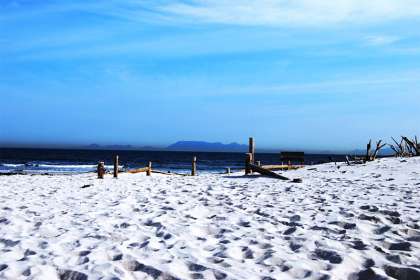

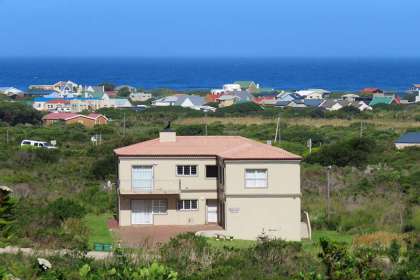


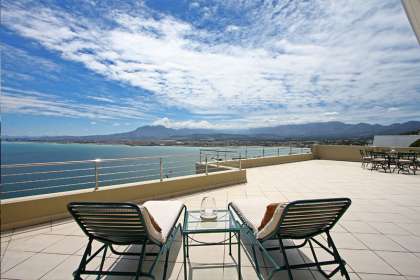
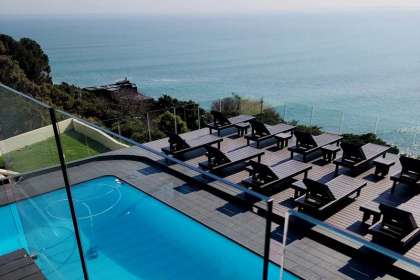
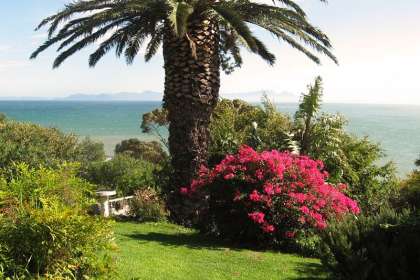
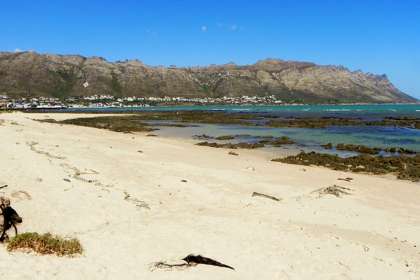
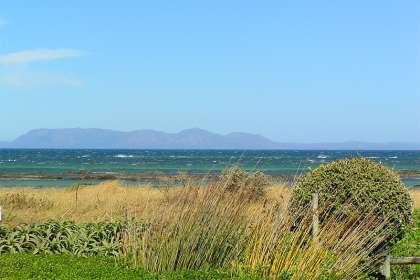
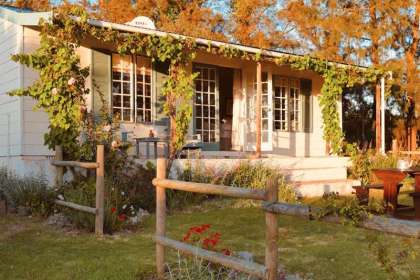
 First light in Pringle Bay ©
First light in Pringle Bay © 
